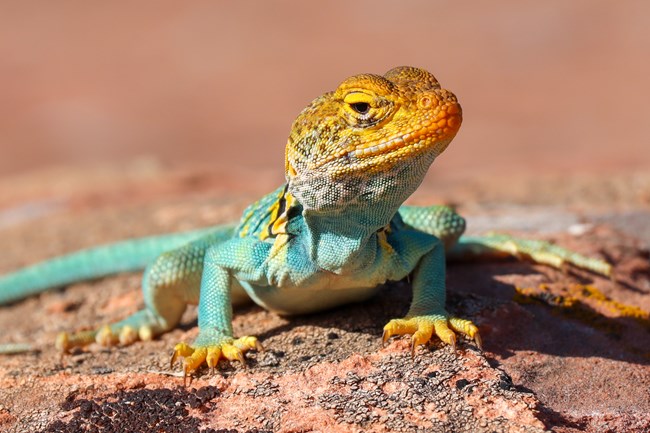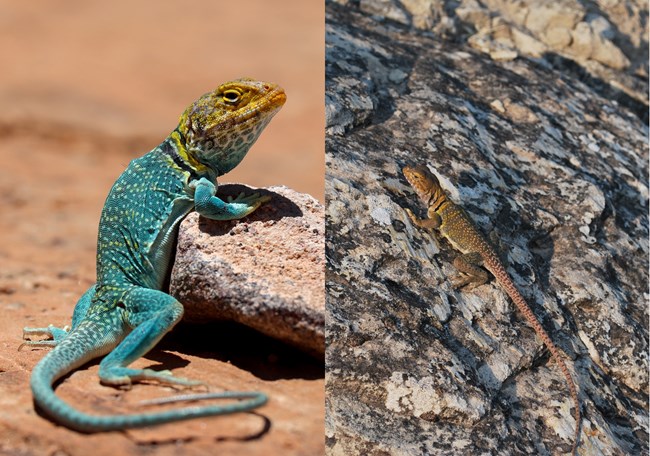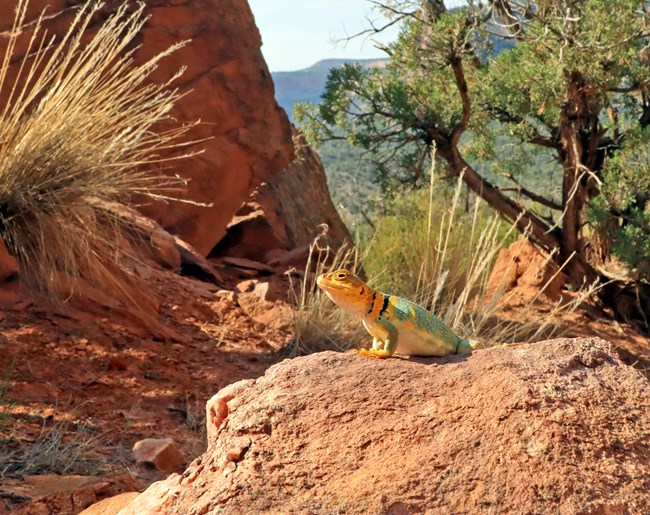
NPS Photo / VIP C DeKalb This is a lizard of many names. They are also known as the Eastern collared lizard, the yellow-headed collared lizard, the common collared lizard, and mountain boomer. Several subspecies have been recognized for Crotaphytus collaris, including auriceps, baileyi, collaris, fuscus, and melanomaculatus. 
Female lizard (NPS Photo / A Winters), male lizard (NPS Photo / VIP C DeKalb) A noticable color change occurs in females who are carrying eggs. She develops red spots on her body and neck, which disappear after she's done laying. Collared lizards lay 1 to 13 eggs per clutch, and females can lay more than one clutch per year. 
NPS Photo / VIP C DeKalb Baby lizards will start off eating insects and move on to larger prey as they grow. Other lizards, such as whiptails, are frequently on the menu for adults. Collared lizards will even eat members of their own species. 
NPS Photo / VIP C DeKalb They are bold lizards, which gives people great opportunities to observe them, but they will run if they feel threatened and bite if they're cornered. You can help protect them by giving them space and watching them from a distance. Please don't pick up or catch lizards in the monument. It's not allowed, and most importantly, leaving them alone is the best way to keep them safe. Check out other animals that live in Colorado National Monument. |
Last updated: June 17, 2025
